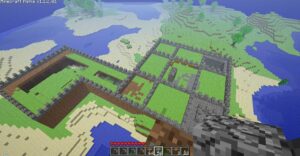I spent most of my 2L year back on my home reserve in Southern Alberta. It’s about a 45-minute drive to Lethbridge. My internet connection was a challenge when trying to listen to lectures or have a strong connection for a zoom call. Internet connectivity for Indigenous Peoples in Canada has long been difficult to implement due to many environmental and socio-economic factors such as remoteness of communities, difficulty gaining first-mile access, unreliable networks, slow speeds, expensive equipment, and high data costs.
Compared to the other infrastructure problems faced by Indigenous communities, the internet might not seem like a big problem. But COVID-19 has shown that when people don’t have equal access, they lose the same opportunities. Remote learning is now crucial to getting a quality education, but poor internet connections or a lack of a connection in the first place are holding many Indigenous children behind their peers.
A lack of internet also affects those looking for work. COVID-19 has led to many layoffs, and the internet had become one of the only reliable sources to find emplpoyment. This lack of resources is one of the reasons why unemployment is already higher in Indigenous communities than in the population at large. Even the transition to working from home means a greater need for high-speed internet, but this poses another disadvantage for rural homes that cannot access a connection to telecommute. The province says 61 percent of B.C. Indigenous communities lack access that meets the standard, although the council notes that number may count communities with just one broadband access point, meaning there is one place in town with adequate Internet, but it’s not in every home, school, or office. [1]
The geography of remote and northern Canadian communities implies transportation access problems, long cable builds, and harsh climate. Building sustainable broadband infrastructure capable of telehealth delivery in northern and remote Indigenous communities is and will continue to be costly. [2] The economic situation combined with the high cost of connectivity suggests that that many remote and northern Indigenous communities and community members may be struggling to pay the high costs of using digital technologies. At the same time, Indigenous community members and Indigenous communities have demonstrated that they are eager users of digital technologies and they will adopt them when they are affordable, reliable, and meet their needs. [3]
The UN has declared access to the internet a human right. This declaration is formed on the basis that having access to the internet means being able to exercise other fundamental human rights and freedoms (e.g. right to freedom of speech). For Indigenous people, the internet is a tool for cultural survival, acting as a hub for Indigenous languages and traditional stories. Without leaving their community, Indigenous youth and adults are able to learn skills, meet Indigenous role models, obtain a degree/diploma, access healthcare, and share their stories with the world. [4]
The inclusion of Indigenous voices on important issues can’t be accomplished if Canada doesn’t work to close the connectivity gap. The plans must be done in coordination with Indigenous governments, letting them lead any project or policy that may affect their communities or land. Without access to broadband, Indigenous peoples will continue to be left behind.
[1] Katie Hyslop, “Closing BC’s Indigenous Internet Gap” The Tyee (12 December 2019) online: https://thetyee.ca/News/2019/12/12/Closing-BC-Indigenous-Internet-Gap/
[2] O’Donnell, Susan “Digital technology adoption in remote and northern Indigenous communities in Canada.” Canadian Sociological Association 2016 Annual Conference. University of Calgary, Calgary, Canada. 2016.
[3] ibid
[4] Emma Greenfield, “Digital Equity for Indigenous Communities” Social Connectedness (7 July 2020) online: https://www.socialconnectedness.org/digital-equity-for-indigenous-communities/
 [1]
[1] [3]
[3]